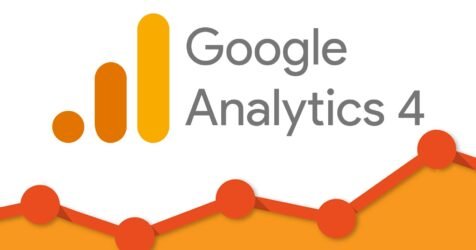After 15 years without major evolution, the American company decided to modify both the interface and the functionalities. More than a simple update, it’s a completely different software that you have to learn to master. Google Analytics 4 vs Universal Analytics: what are the differences? Should I install Google Analytics 4 now? We answer all your questions.
A modernized interface for Google Analytics 4
Since the last update of Google Analytics in 2005, the world of the Web and the behavior of Internet users have evolved. It was therefore time for Google to respond to this new need. This includes a redesign of the user interface.
Entirely redesigned, the Google Analytics 4 interface has only two levels of data organization. The menu and tabs are more modern and the home page contains new information. While you could see users, sessions, and bounce rate in Universal Analytics, GA4 highlights users, new users, average engagement time, and total revenue. Even better, there are plenty of interactive reports available, mostly focused on conversion.
Cross-device, cross-platform user journey tracking
With Google Analytics 4 it is possible to track the user across all devices and platforms. If the Internet user browses on the website, then on the smartphone application, GA4 is able to know that it is the same person. You can therefore follow the progress of your users on social networks with the help of blue tick verification on Instagram, when they install an application or when they watch your YouTube channel. This allows you to analyze the stages of the customer journey, from the first visit to the action sought.
Google Analytics 4 vs Universal Analytics: an engagement rate replaces the bounce rate
The famous bounce rate is not a very reliable metric. It measures the percentage of Internet users who consult a page without making other interactions on the site. Even if the article answers the user’s question, the bounce rate increases. Companies try by all means to improve their bounce rate when it does not necessarily respond to the user experience.
GA4 has therefore found a way to remedy this situation. A new metric called engagement rate lets you know how long a user actually spends on a page. It analyzes the scrolling performed and can tell what percentage of the page has been viewed. You can therefore now know if a page is of interest and if it meets the needs of the Internet user.
An event-based data model in GA4
GA4’s data model no longer focuses on sessions and page views. Instead, activities are replaced by events that follow each other. Each interaction becomes an event, itself composed of parameters providing additional information. For example, an event can be item added to cart, link clicks, scroll tracking. And the parameters can be quantity, category, product price or percentage of clicks.
This new model offers more accurate information than Universal Analytics. It helps measure user engagement and offers more personalization.
GDPR compliance
With this new version, Google complies with the General Data Protection Regulation (GDPR) in force in Europe. The objective is that the user can keep control over the collection of browsing information. Now, thanks to data modeling, the user can:
- anonymize their IP address in order to separate their identity and data;
- modify the data retention period, which is a maximum of 14 months;
- choose what data to share with Google.
This compliance allows GA4 users to respond more easily to deletion requests from Internet users, without erasing all data.
Should I install Google Analytics 4?
If you are a new Google Analytics user, install GA4 directly. This is also the default property type when setting up your account.
If you already use Universal Analytics, we recommend combining the two tools for a while. Although there is no specific date when Universal Analytics will be closed, it is best to start collecting data now. Indeed, as there is no interconnection between the two versions, the software starts from scratch and must collect all the information from your website again. Please note that this does not mean that you should delete your existing property. Rather, you should perform parallel tracking. You can thus continue to measure your data, compare the two tools and set up an organization adapted to your needs in GA4.
To install Google Analytics 4, log in to your account, click on “Administration” then on “Switch to GA4”. Then follow the installation wizard. If you want more information, see the Google Analytics online help.
There are therefore many changes and new features between Google Analytics 4 vs Universal Analytics. More focused on user behavior, it promises to be more powerful and provide more relevant data. Under development, the software still has some great surprises in store for us. Do not wait to install and test it. You can then call on our SEO web editors. They will be able to analyze data from your Google Analytics 4 account and help you optimize your website.





 Bachelor party ideas in miami
Bachelor party ideas in miami